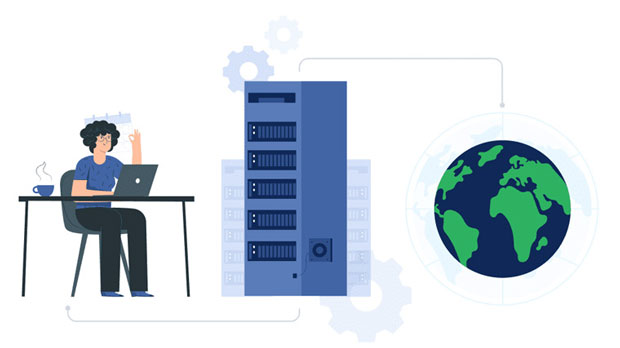In today’s interconnected business world, secure and efficient management of internet traffic is critical for enterprises. socks5 proxy offers an advanced solution for routing network traffic securely, bypassing restrictions, and ensuring anonymity. This guide will provide an in-depth overview of configuring a SOCKS5 proxy for enterprise networks, covering the basic setup, security considerations, and best practices to ensure seamless integration and optimal performance. Whether you’re looking to improve security, manage bandwidth, or control access, SOCKS5 proxy configurations offer flexibility and reliability to meet your organizational needs. What is SOCKS5 Proxy?SOCKS5 (Socket Secure version 5) is an internet protocol that facilitates the routing of network packets between a client and a server through a proxy server. Unlike traditional proxies that work at the application level (such as HTTP or HTTPS), SOCKS5 operates at a lower level, handling all types of internet traffic, including HTTP, FTP, and even non-web protocols like VoIP or P2P. This makes it a versatile solution for enterprises that require a robust, all-encompassing method for managing network traffic. socks5 proxies offer several advantages over other proxy protocols, including improved security features, greater flexibility, and the ability to handle diverse traffic types. In an enterprise setting, they can be used for various purposes, such as bypassing geographical restrictions, securing communications, and optimizing network performance.Why Use SOCKS5 Proxy in Enterprise Networks?Enterprises are increasingly adopting proxy solutions like SOCKS5 for a variety of reasons, primarily revolving around security, privacy, and network optimization. Below are key benefits that SOCKS5 can bring to an enterprise network:1. Enhanced Security: SOCKS5 provides a higher level of security than traditional proxy protocols. It supports authentication, meaning only authorized users can access the proxy server. This reduces the risk of unauthorized access and improves the integrity of sensitive data.2. Traffic Flexibility: Unlike other proxies, which are restricted to specific traffic types (such as HTTP/HTTPS), SOCKS5 works with all types of network traffic. This feature allows enterprises to secure not just web traffic but also FTP, VoIP, and other services.3. Bypassing Geo-restrictions: In situations where access to certain websites or services is restricted based on geographic location, SOCKS5 proxies can be configured to route traffic through servers located in permissible regions, enabling access to blocked content.4. Bandwidth Optimization: By using a SOCKS5 proxy, enterprises can manage network bandwidth more efficiently, ensuring critical applications and services receive priority while less important traffic is routed through alternate channels.5. Privacy and Anonymity: For enterprises dealing with sensitive customer data or proprietary information, SOCKS5 proxies offer an additional layer of privacy by masking IP addresses and preventing data leaks.Key Steps in Configuring SOCKS5 Proxy for Enterprise NetworksImplementing a SOCKS5 proxy in an enterprise network involves several steps. The process should be approached systematically to ensure that the configuration is secure, efficient, and scalable. Below is a step-by-step guide to configuring a SOCKS5 proxy in an enterprise environment: 1. Set Up a socks5 proxy serverThe first step is setting up the SOCKS5 proxy server. Depending on the network infrastructure, this can be done on a dedicated server or through a cloud-based service. Typically, the process involves the following:- Install Proxy Software: Choose and install appropriate SOCKS5 proxy software that aligns with the organization’s network requirements. It should support necessary features such as authentication, logging, and secure encryption.- Configure Server Settings: Configure the proxy server’s network settings, including the IP address, port, and any security features like encryption or user authentication.- Enable Authentication: For added security, configure the server to require authentication, ensuring that only authorized devices or users can connect to the proxy. 2. Configure Client Devices to Use the SOCKS5 ProxyOnce the SOCKS5 proxy server is set up, client devices within the enterprise network need to be configured to route their traffic through the proxy server. This step can be carried out either manually on individual devices or by using network-wide configuration tools. Here are key aspects to consider:- Device Configuration: Each client device (e.g., computers, smartphones, or IoT devices) must be configured to use the proxy server by inputting the SOCKS5 server’s IP address and port number into the device’s network settings.- Network-Wide Configuration: For larger networks, it may be more efficient to configure devices to use the SOCKS5 proxy automatically via a system like DNS or DHCP. This ensures that all devices on the network are routed through the proxy without requiring individual setup. 3. Implement Security MeasuresSecurity is a top priority when configuring a SOCKS5 proxy in an enterprise environment. Ensure that the following security practices are in place:- Use Encryption: Ensure the proxy connection is encrypted using Secure Sockets Layer (SSL) or Transport Layer Security (TLS) to prevent eavesdropping on sensitive traffic.- Enable Access Control: Use access control lists (ACLs) or similar mechanisms to restrict who can access the proxy server. This might include limiting access by IP address, user role, or specific devices.- Monitor Traffic: Implement logging and monitoring to track usage, detect unauthorized access attempts, and analyze traffic patterns. This helps in identifying potential security breaches or performance bottlenecks. 4. Test the Proxy ConfigurationAfter setting up the SOCKS5 proxy server and configuring client devices, perform thorough testing to ensure that everything is working as expected. Key testing areas include:- Connectivity: Verify that client devices can connect to the proxy server and route traffic as intended.- Speed and Latency: Test the proxy’s impact on network performance, including speed and latency, to ensure that it does not introduce significant delays.- Security: Test for potential vulnerabilities, such as unauthorized access or data leaks, to confirm that the implemented security measures are functioning properly. 5. Maintain and Optimize the Proxy SetupAfter the SOCKS5 proxy is deployed and running, it is essential to maintain and periodically optimize the configuration:- Regularly Update Software: Keep the proxy software up to date with the latest security patches and feature updates to prevent vulnerabilities.- Adjust Bandwidth Allocation: Based on network traffic patterns, adjust bandwidth limits or prioritize certain types of traffic to optimize overall network performance.- Review Access Logs: Regularly review logs for any suspicious activity or potential performance issues.Best Practices for Managing SOCKS5 Proxy in EnterprisesTo ensure the ongoing success of a SOCKS5 proxy implementation in your enterprise network, here are some best practices to follow:1. Use Centralized Proxy Management: If your organization has multiple locations or devices, using centralized proxy management tools can streamline configuration and monitoring, reducing the risk of misconfigurations.2. Conduct Regular Security Audits: Periodically audit the SOCKS5 proxy server and its configuration to ensure that it remains secure against evolving threats.3. Educate Users: Provide training for employees to ensure they understand the purpose of the SOCKS5 proxy and how to use it effectively. This includes awareness of security policies and access guidelines.ConclusionConfiguring a SOCKS5 proxy for an enterprise network provides significant benefits in terms of security, flexibility, and performance optimization. While the setup process requires careful planning and attention to detail, the advantages of a well-configured SOCKS5 proxy far outweigh the effort involved. By following the outlined configuration steps and implementing robust security measures, enterprises can enhance their network infrastructure, safeguard sensitive data, and improve overall connectivity.
Dec 27, 2024






















































